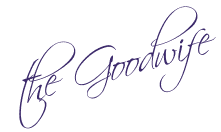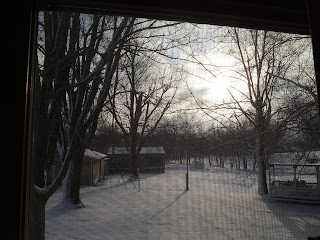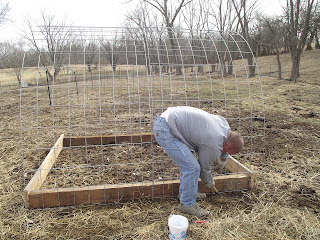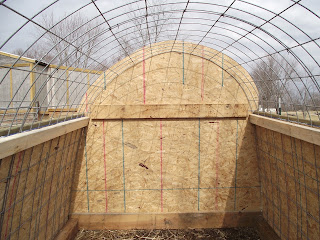This is a topic that's been swirlin' round in my little pea brain for a few weeks now. It's finally reached the percolation stage and I gotta get it down so it will go away! Once again, these are my opinions and mine alone. What you decide to do with your animals is your business and blahdeblahblah......
In any purebred animal, be it horse, goat, dog, cat, pig, chicken, whatever, if you go back far enough you will find a rather spectacular amount of line breeding. In animals we call it line breeding as opposed to in breeding, but it means the same thing.
Take the dog for instance. If you have a pure bred dog, at one time in it's ancestry it was just your basic garden variety cur. Folks picked out dogs with traits they liked and they bred them together. Then they bred fathers to daughters, mothers to sons, grandparents to grandchildren and so on to "fix" the genes. Then they would start to outcross a little bit to see if the genes would pass on true, all the while crossing back on the original stock to re-"fix" the genes. This is true of every single purebred critter out there. Of course this is a very simplistic view of things, and if you want to know more you can do the research and get into it a bit deeper. I just want to say again, if you go back far enough in your purebred animals pedigree you WILL find a rather spectacular amount of line breeding. It's just the way it is. You cannot create a new breed without it.
Now that that's out of the way, here comes the important part that you HAVE to listen to......
When you line breed, you are not only concentrating the desirable characteristics, you are also concentrating the un-desirable ones. You must ONLY breed the best. When you are building up a herd, you have to cull and cull hard. Take my Kinders for instance. Kinders are a sort of rare as well as new breed of goat. If I go back 6 generations (sometimes less) my Kinders are related to almost every other Kinder out there. This isn't a bad thing, and only becomes a real problem when people breed just to be breeding and don't worry about quality. For instance, if Tulip were to throw a kid with a split teat, or a double teat, even if it were a buck kid, I wouldn't sell (to the general public) ANY kids from that breeding. Nada, none, zilch. The kids would go to the meat sale or would be butchered here at home with no exception and I wouldn't repeat the breeding. Next breeding I would use a different buck and if she again threw a kid with a split teat, or an extra teat, I would once again butcher all the kids and I would know that the defect was in Tulip's lineage. I would keep Tulip, because she is an excellent milker, but I would NEVER sell kids, they would all go to meat. It would be unethical for me to sell kids from a goat that I know possesses a defective gene.
Star is Tulip's daughter as well as her half sister. Star is the product of Tulip being bred back to her father, and Star is an amazing goat. She has a gorgeous udder and no problems. She also throws beautiful correct kids. Through the careful breeding program of my friend Rhonda, this line breeding produced an excellent animal, because she only breeds animals that are completely correct! Now say you've got a goat that is a gallon a day milker, but her attachments aren't the greatest. Should you line breed this goat? Well it depends. Does her father's mother have nice attachment, really nice attachment? If she does, then you could try breeding her back to her father to see if that would improve the attachment on her doelings. If her father's mother doesn't have good attachment then you wouldn't want to even try it, because you would be concentrating the gene that caused the poor attachment.
Another note about line breeding is that you should take care to breed vertically (up and down the pedigree, ie mother to son, father to daughter, grandfather to great granddaughter) as opposed to horizontally (side to side in the pedigree, ie brother to sister, half brother to half sister). You run much less risk of problems when you do things this way. Although breeding half siblings can do wonderful things, it is also a really quick way to bring any genetic problems to the forefront.
I should also say, that when you are developing a new line or bringing back a line from the brink of extinction, you sometimes must breed imperfect animals and deal with the consequences. You still want to pick the best of what you've got and breed them together. This is called "breeding up" and it's a long road to perfection. You are much better off if you can find and buy, or breed to, extremely correct animals, but sometimes this just isn't possible.
Of course in a well established breed such as Nubians or Alpines in goats, or Labs or Boxers in dogs, or Quarter Horses or Hereford cattle you have a broad enough gene pool that you shouldn't have to mess with any of this. But in Heritage animals this is a big deal, and that's what's got me thinking......
In 2009 the Gloucestershire Old Spot breed of hog had less than 1000 animals in Great Britain and fewer than 200 breeding animals in the US. It is that way or worse with a great deal of heritage animals. If an animal's numbers are allowed to fall to that few, you MUST line breed. There is no way around it because there simply aren't enough animals to cross breed them out without losing the "fixed" genes that make the breed what it is. If you are responsible with your breeding program, this doesn't have to be a problem, but you have to cull, cull, cull. You have to be prepared to eat lots of your culls, which is why this is less of a problem in livestock, than it is in dogs or cats! Unless you want to eat bbq'd Fido and that's your business..........
That said, Ed Earl isn't registered. One of his litter mates was born without a tail, so his breeder didn't want to register him in case that popped back up in later generations. Should he have even sold Ed Earl to me? As long as I breed responsibly and am aware of the possibilities of this defect cropping up, it shouldn't be a problem. If problems continue to arise the breeding should be re-evaluated. As for my boar being not registered, I could care less. I'm not much for playing with others, and don't particularly like the politics that oftentimes come with breed registries. Most breed registries (with the exception of rabbits) don't guarantee good animals. Most registries, if the parents are registered, well then the offspring can be registered and it doesn't matter a whit the quality of the animal. It is in the hands of the breeder, and their choice to register the offspring or not. The breeder of Ed Earl is a good example. He was correct in not registering Ed Earl since he came from a litter with a cosmetic defect. A note about registered rabbits; Rabbits can only be registered after being examined and passed by a registrar, therefore a subpar animal is not going to be registered, no matter it's parentage.
Should I breed Ed Earl? Well there's that question again. Here's the thing..........I am breeding solely to get pork for my table. I have NO intention of selling Ed Earl's offspring as breeding stock. Every boar piglet will be castrated before leaving here and buyers of the gilts will know about the tail issue and that they are buying FEEDER pigs, not breeding stock.
One thing is for sure and certain, Ed Earl shouldn't be line bred, because the defect that caused the no tail in his brother could be masking an even deeper problem, or it could be nothing. I won't know until I've bred him and even then I may not know because I'll only be breeding him to one sow and genes cross differently in different animals. It isn't near the problem for someone like me, who is breeding solely for meat, as it would be for someone who was breeding to sell breeding stock to others. But again, when you have heritage animals with a limited gene pool you sometimes must do things you wouldn't do in a more optimal situation, but you still have to be honest and ethical in all you do. You should be honest and ethical in every aspect of your life, but that's not the topic for today.....hehehe!
I didn't get Old Spot pigs because I want to become a famous breeder and save the breed. I don't have the land, nor the money for that. What I want is to produce my own meat for my own freezer and sell the surplus, probably at the livestock auction. In that case, having a pig with the genetic codes to produce tail-less pigs is pretty much a non issue, but I will still be very careful in my breeding, even though I'm just breeding for the table.
In closing I'd just like to say that line breeding is a very good tool in the hands of a responsible breeder..............





















































